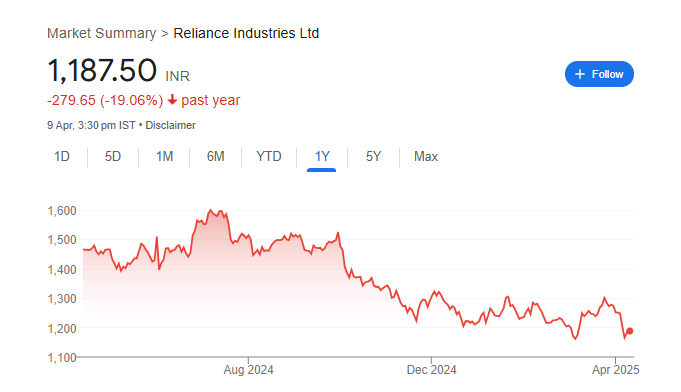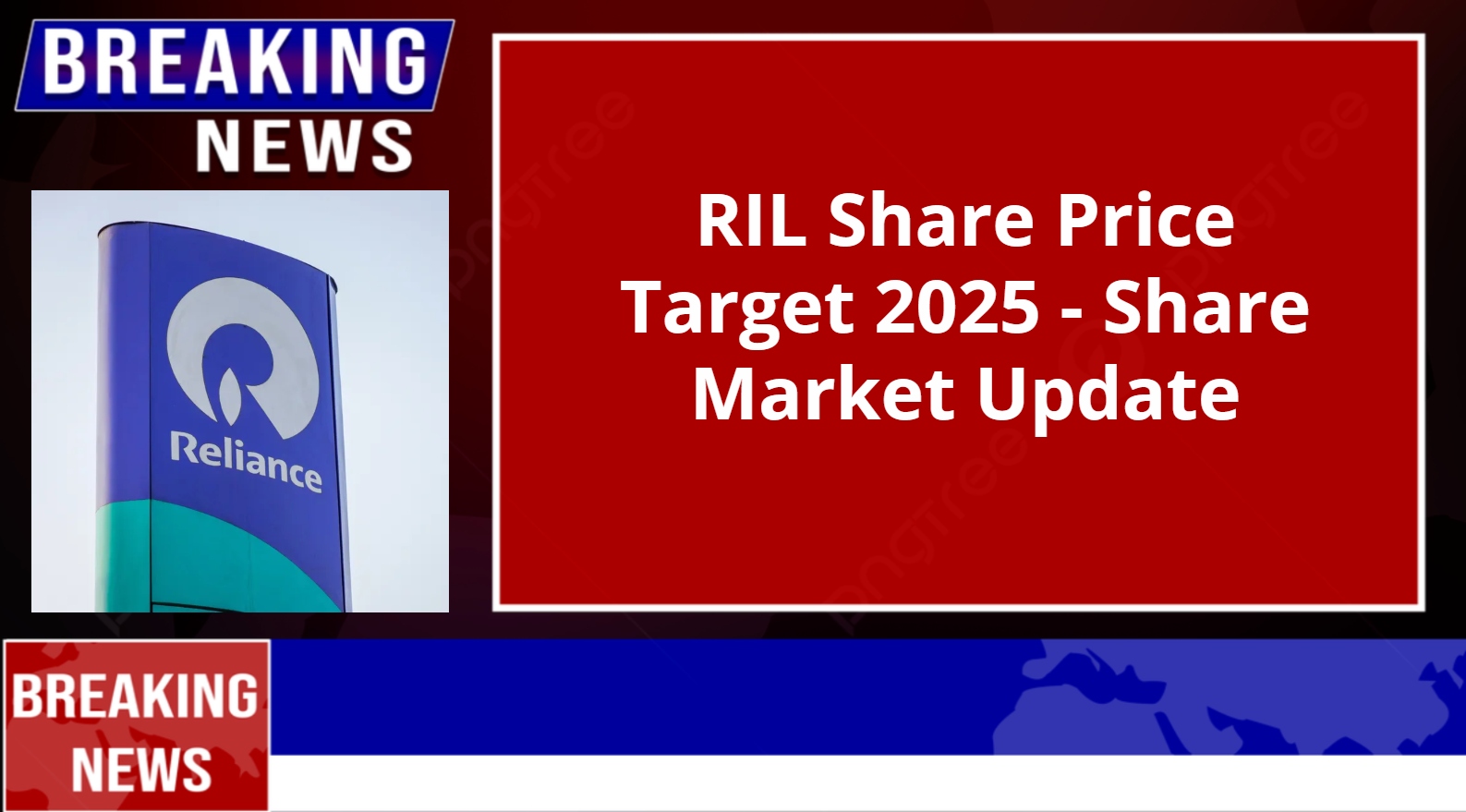RIL Share Price Target 2025 – Share Market Update
Reliance Industries Limited (RIL) is one of India’s biggest and most trusted companies, with a strong presence in sectors like energy, telecom, retail, and digital services. Its share is widely followed in the stock market because of the company’s steady growth, large customer base, and ambitious future plans. RIL’s ability to adapt to new business opportunities, like green energy and digital platforms, makes it attractive for long-term investors. RIL Share Price on NSE as of 11 April 2025 is 1,187.50 INR.
Current Market Overview Of RIL Share
- Open: 1,169.50
- High: 1,189.80
- Low: 1,168.00
- Mkt cap: 16.04LCr
- P/E ratio: 23.23
- Div yield: 0.42%
- 52-wk high: 1,608.80
- 52-wk low: 1,114.85
RIL Share Price Chart

Shareholding Pattern For RIL
- Promoter: 50.13%
- FII: 19.15%
- DII: 19.1%
- Public: 11.61%
RIL Share Price Target Tomorrow
| RIL Share Price Target Years | RIL Share Price Target Months | RIL Share Price |
| RIL Share Price Target 2025 | April | ₹1200 |
| RIL Share Price Target 2025 | May | ₹1250 |
| RIL Share Price Target 2025 | June | ₹1300 |
| RIL Share Price Target 2025 | July | ₹1350 |
| RIL Share Price Target 2025 | August | ₹1400 |
| RIL Share Price Target 2025 | September | ₹1450 |
| RIL Share Price Target 2025 | October | ₹1500 |
| RIL Share Price Target 2025 | November | ₹1550 |
| RIL Share Price Target 2025 | December | ₹1610 |
Key Factors Affecting RIL Share Price Growth
Reliance Industries Limited (RIL) is one of India’s largest and most diversified conglomerates, with interests spanning energy, petrochemicals, retail, telecommunications, and emerging green energy sectors. The company’s share price growth is influenced by several key factors:
-
Retail Business Restructuring and Growth
RIL’s retail segment has shown signs of recovery, driven by strategic restructuring efforts. This includes rationalizing the grocery business, closing low-profitability stores, and focusing on trendier designs in the fashion segment. The launch of new fast-fashion formats like Yousta has also contributed to improved performance.
-
Telecom Sector Expansion
Reliance Jio, the company’s telecom arm, continues to be a significant growth driver. Analysts anticipate a 24% earnings acceleration in Jio, supported by potential tariff hikes and increased 5G consumption.
-
Oil-to-Chemicals (O2C) Business Performance
The O2C segment, a major revenue contributor, has faced challenges due to shrinking margins amid global oversupply. However, improvements in refining margins are expected as approximately 1.0 million barrels per day of global refining capacity is projected to close permanently by 2025.
-
Strategic Energy Deals
RIL has entered into a significant 10-year agreement with Rosneft to purchase discounted crude oil worth approximately $13 billion annually. This deal aims to reduce India’s energy bill and ensure a stable supply, potentially enhancing RIL’s refining margins.
-
Investments in Green Energy
The company is investing heavily in green energy initiatives, including solar photovoltaic and fuel cell manufacturing, energy storage, and green hydrogen production. RIL expects its new energy business to rival the profitability of its established O2C segment within the next 5-7 years.
-
Potential IPOs of Consumer-Facing Businesses
While RIL has not rushed to list its consumer-facing businesses, the eventual IPOs of segments like Reliance Retail and Jio are anticipated to unlock significant value. Analysts suggest that the real value will surface during actual IPO transactions, which could positively impact the company’s share price.
Risks and Challenges for RIL Share Price
Reliance Industries Limited (RIL), a major Indian conglomerate, faces several risks and challenges that could impact its share price. Here are six key factors:
-
Stock Price Volatility
RIL’s share price has experienced significant fluctuations, with a 22% decline from its July 2024 peak of ₹1,608.95 to ₹1,156 in March 2025. This volatility reflects investor concerns over the company’s short-term performance.
-
Regulatory Scrutiny
The company faces increased regulatory scrutiny, particularly in its telecom and digital sectors. This could lead to higher compliance costs and potentially slow down growth in these areas.
-
Environmental and Operational Risks
RIL’s oil-to-chemicals business has significant environmental impacts, including greenhouse gas emissions and water usage. These factors may attract regulatory attention and affect the company’s operations.
-
Debt Levels
As of September 2024, RIL’s debt stood at ₹3.36 trillion ($39.6 billion). The company is seeking to refinance up to $3 billion of this debt, which could affect its financial stability and investor confidence.
-
Execution Risks in New Ventures
RIL’s investments in new energy sectors, such as renewables and hydrogen, carry execution risks. Delays or underperformance in these projects could impact the company’s profitability.
-
Geopolitical and Legal Challenges
RIL’s business dealings, such as its partnership with Rosneft, expose it to geopolitical risks. Additionally, past legal issues, including fines for manipulative trading practices, may affect investor perception.
Read Also:- Federal Bank Share Price Target 2025 – Share Market Update

